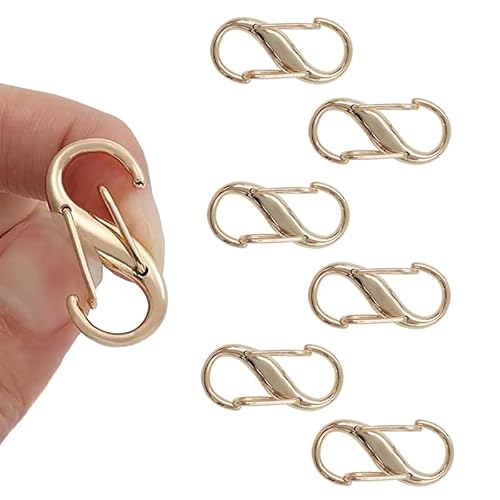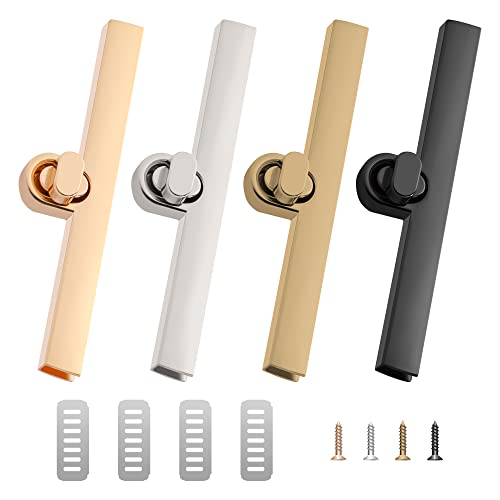Ever found yourself ready to head out the door, only to realize your favorite handbag’s clasp just won’t snap shut? It’s a minor hiccup that can throw off your whole vibe. But don’t worry, you’re about to become a DIY fix-it master for that pesky handbag clasp.

With a few simple tools and some patience, you’ll have that clasp working like new in no time. Whether it’s a loose screw or a misaligned mechanism, you’ve got this. So, grab your handbag and let’s dive into the nitty-gritty of clasp repair.
Understanding the Handbag Clasp
Before you start fixing your handbag’s clasp, it’s crucial to understand its mechanics. Most clasps have two primary components: the catch and the fastener. The catch is the part you press or slide to release the clasp, while the fastener is the hook or snap that holds the bag shut.
Types of Handbag Clasps
Handbag clasps come in various styles:
- Magnetic clasps are invisible from the outside and use magnets to secure the bag.
- Push clasps require you to push a lever to open them.
- Twist clasps involve a small knob that you twist to release the lock.
- Lobster clasps, similar to jewelry, have a small lever that opens the clasp.
Each type operates differently, so identifying which one you’re dealing with is key to a successful repair.
Common Clasp Issues
Over time, clasps might develop issues such as:
- Loosening: The fastener may lose its grip, making the bag easy to open unintentionally.
- Stiffness: The catch might become hard to press or move.
- Misalignment: Components can get misaligned, preventing a secure closure.
What You’ll Need
Before you proceed, ensure you have the right tools:
- Needle-nose pliers
- A flat-head screwdriver
- Lubricant (if necessary)
Inspecting the Clasp
Take a close look at your clasp. Check for obvious damage like bent parts or rust. Often, simple tweaks can remedy clasp issues without the need for replacement parts.
Adjusting for a Quick Fix
Sometimes, a quick adjustment is all it takes:
- Use the pliers to gently bend back misaligned parts.
- If stiffness is an issue, apply a small amount of lubricant.
Remember to handle your handbag and its components with care as excessive force can cause more damage. With a better understanding of your handbag clasp, you’re now prepared to troubleshoot and fix common issues.
Tools You’ll Need
Before you tackle the clasp on your handbag, make sure you’ve got the right tools on hand. Proper tools are crucial for a smooth fix and to prevent further damage to your accessory.
Needle-nose pliers are a must. They allow you to grip small parts and bend metal with precision. A flat-head screwdriver is handy for prying open some types of clasps without scratching them. Keep a lubricant like WD-40 ready to smooth out any stiffness. In some cases, super glue might be necessary to secure loose parts, but use it sparingly.
For magnetic clasps, consider having a magnet to realign or re-magnetize parts. If you’re dealing with a twist clasp, a set of mini screwdrivers can be invaluable. They’ll help you tighten any loose screws without stripping them.
Make sure you have a clean work surface. Tiny parts are easy to lose, so it’s best to keep the area clutter-free. A magnifying glass can also be a godsend when you’re working with small, intricate details.
Here’s a quick list of what you’ll need:
- Needle-nose pliers
- Flat-head screwdriver
- Lubricant (like WD-40)
- Super glue (if applicable)
- Magnet (for magnetic clasps)
- Mini screwdrivers (for twist clasps)
- Clean, well-lit work surface
- Magnifying glass (optional)
Remember to handle your tools with care. You want to fix your clasp, not leave scratches or dents. Up next, you’ll learn how to use these tools effectively to bring your clasp back to full function.
Simple Fixes for Loose Screws
Sometimes a faulty handbag clasp is just a case of loose screws. You’ll know this is the problem if the clasp has a slight wobble to it or seems less secure than usual. Tightening these screws is often all it takes to get your handbag clasp functioning like new.
First, you’ll need the right size mini screwdriver from your tool kit. If you’re not sure which size to use, test them out until you find one that fits snugly into the screw’s head. This prevents stripping the screw, which can make the problem worse.
Here’s what to do:
- Lay your handbag on a flat, clean surface.
- Steady the clasp with one hand.
- Use the mini screwdriver with your other hand to gently tighten each screw clockwise.
« How to Check Handbag’s Serial Number – Avoid Fakes with These Tips
How Many Handbags Allowed in Emirates? Unpack the Secrets to Flying in Style »
Be careful not to over-tighten; this can damage the screws or the clasp itself. Just a firm twist until you feel resistance should be enough.
If screws keep loosening, it might be time to bring out the super glue. Apply a tiny drop on the screw’s tip before you tighten it. This creates an extra seal once the screw sets, preventing it from loosening again.
After fixing the screws, give the clasp a few test snaps to make sure it’s secure. If it snaps shut correctly without wobbling, you’ve done it right.
Remember, loose screws on a handbag clasp are a common issue but also one of the easiest to fix. Regular checks on the tightness of your clasp screws can extend the life of your handbag, ensuring it remains a stylish and functional part of your wardrobe for longer.
Fixing a Misaligned Clasp
When your handbag’s clasp is out of alignment, don’t fret; many clasps are designed for simple adjustments. First, check the alignment of the two sides; they should meet perfectly when closed.
If there is a misalignment, gently bend the parts back into place using needle-nose pliers. Do not use excessive force, or you risk breaking the clasp altogether. For magnetic clasps, ensure the magnet is seated correctly and hasn’t shifted out of position. If it’s loose, apply a small amount of super glue and reposition it. Wait for the glue to fully set before snapping the clasp shut.
In case of a twist clasp or lobster clasp, look for any gaps where the mechanism doesn’t interlock cleanly. Use mini screwdrivers to slightly loosen the screws, then realign the parts before tightening again. Remember, adjustments should be minor; a small shift can make a big difference.
For push clasps, if they stick or won’t lock properly, they may have been pressed too hard or too often. Reduce the spring tension by carefully bending the metal tongue of the clasp inwardly. Check the action after each adjustment until you achieve a smooth, secure closure.
Always check the clasp’s action after each adjustment. Close and reopen it several times to ensure the repair holds and the clasp functions smoothly. If you’re unsure or the clasp is particularly intricate, consider taking your handbag to a professional to avoid any damage.
It’s important to maintain your handbag clasps regularly. Dirt and debris can cause clasps to misalign. Keep them clean and free of grime to prevent future issues. Regular maintenance includes checking the alignment and making slight adjustments as needed to keep your handbag looking and functioning at its best.
Replacing the Clasp
Sometimes a clasp is beyond repair. When you’re faced with such a situation, replacing the clasp is your next step. You’ll first need to source a replacement clasp. Make sure it matches the size and style of your handbag to maintain its original look.
Finding the Right Replacement
Identify the type of clasp you need by examining the broken one. Visit a crafts store or search online specialty shops to find a suitable match. Keep your handbag’s brand and model in mind to ensure compatibility.
Removing the Old Clasp
To remove the old clasp, you’ll typically need small screwdrivers or a pair of needle-nose pliers.
- If it’s screwed in, gently unscrew the fasteners.
- For clasps held by prongs, carefully straighten them out and lift the clasp away from the fabric.
- In the case of sewn-in clasps, use a seam ripper to detach it without damaging the bag.
Attaching the New Clasp
Once you have the new clasp, reverse the removal process.
- If you’re screwing it in, ensure it’s tight enough to be secure but not so tight that it strains the material.
- For prongs, make sure they’re evenly spaced before pressing them into place.
- For a sewn-in replacement, use a thick, durable thread that matches your handbag.
Regular check-ups of the clasps can spare you the need for replacements. A simple care routine will extend the life of your handbag. Remember to handle the clasp gently; forceful closures or openings can cause premature wear and tear. With the right tools and a bit of patience, your handbag will be as good as new, ready for your next night out or daily errand.
Conclusion
With the right tools and a bit of patience, you’ve learned that fixing a handbag clasp can be a straightforward task. Whether you’ve dealt with a pesky misalignment or stiffness, the steps outlined should have helped you breathe new life into your favorite accessory. Remember, regular check-ups and a gentle touch go a long way in keeping your handbag’s hardware in top shape. Now that you’re equipped with these repair and maintenance tips, your handbag is ready to snap shut securely, accompanying you on many more outings to come. Happy fixing!
Frequently Asked Questions
What are the common types of handbag clasps?
Handbag clasps vary in design, but the most common types include magnetic, push, twist, and lobster clasps. Each has a unique mechanism for opening and securing the bag.
What tools are needed to fix a handbag clasp?
To fix a handbag clasp, you’ll generally need needle-nose pliers, a flat-head screwdriver, and some lubricant.
How can I fix a clasp that won’t snap shut?
To fix a clasp, first inspect it for any visible damage. For a misaligned clasp, gently bend the parts back into place with pliers. If stiffness is the issue, apply a small amount of lubricant.
What should I do if my handbag clasp is misaligned?
For a misaligned clasp, use needle-nose pliers to carefully bend the clasp’s parts back to their original position. Ensure you do this gently to avoid further damage.
When should a handbag clasp be replaced?
A clasp should be replaced if it is damaged beyond repair. This includes cases where the clasp won’t secure properly even after attempting to fix it, or when parts are broken and cannot be bent back into shape.
How can I find the right replacement for my handbag clasp?
To find the right replacement clasp, match the size, type, and design of the original clasp. Consider the material and color to ensure that it complements your handbag’s style.
What can I do to prolong the life of my handbag clasp?
Regular maintenance, such as cleaning, tightening loose components, and applying lubricant to moving parts, can prolong the life of your handbag clasp. Avoid overstuffing your handbag and handle the clasp gently during use.










